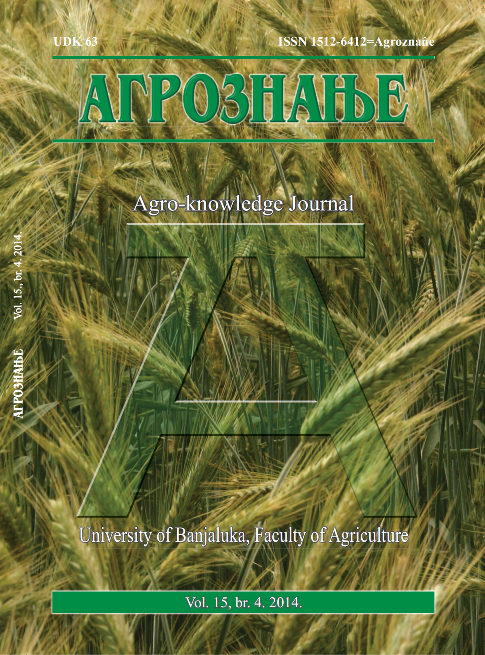Effect of Interaction of Fungicides on Pathological Changes of Sugar Beet Seedlings
DOI:
https://doi.org/10.7251/AGRSR1404375SAbstract
The effect of different fungicides on the pathological changes of seedlings of the sugar beet Nesvisky 2 variety was analyzed in this paper. The investigation included four size fractions of sugar beet seed (3.25 to 3.50 mm, 3.50-3.75 mm, 3.75-4.00 mm; 4.00 to 4.25 mm) treated with various fungicides. The following seed treatment variants were analyzed: I – water washing out – control, II - treated with Royal Flo fungicide, III - treated with a combination of Royal Flo and Tachigaren fungicides and IV - treated with Royal Flo fungicide, coated and then Tachigaren was applied on dry pilled seed. The average germination energy ranged from 56.7 % in the variant III to 90.6 % in the variant II. Total germination of the tested seed fractions and treatments ranged from 66.2 % in the variant III to 93.4 % in the variant II. The analysis of the incidence of abnormal and diseased seedlings, as well as non-germinated seed, indicates pathological changes caused by the interaction of the aforementioned fungicides. The negative effect of the combination of fungicides is different, and it depends on the thickness of corky seed layer and coating mass layer, which have a role in reducing the direct negative effects of fungicides on germs.

